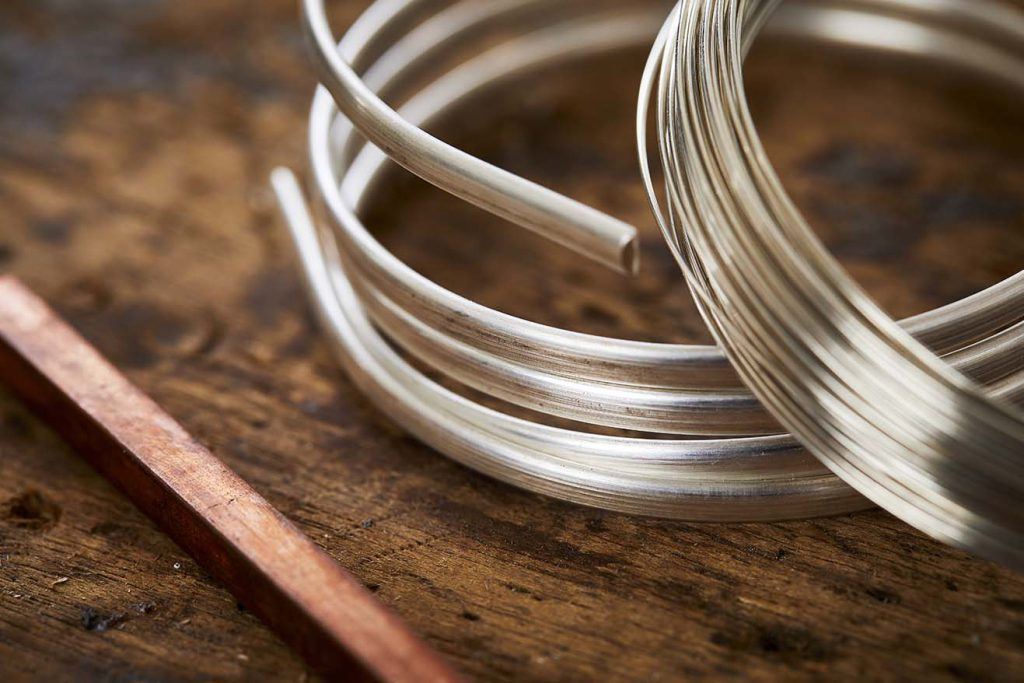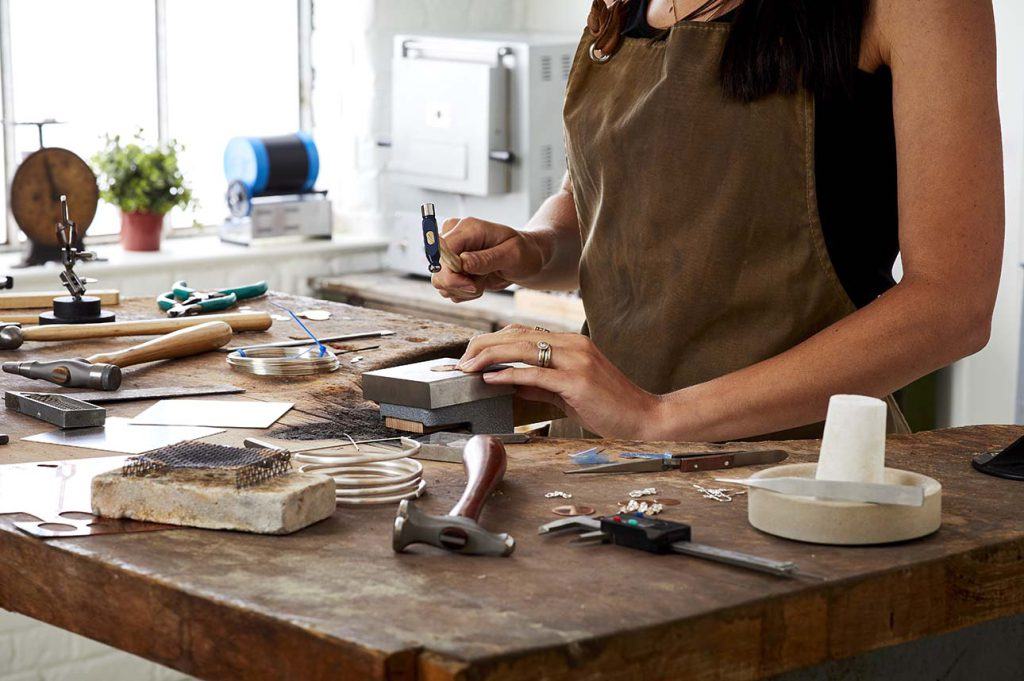Jewellery making wire, whether silver, gold or copper is an essential component for custom jewellery designs. Knowing how to work with our range of wire can make all the difference to your designs, which is why we have put together some of our most useful advice and tips on wire wrapping, to help you take your designs to the next level.
Wire wrapping techniques in jewellery making are vast; they range from making basic loops to producing intricately stone set pendants. There are many different designs you can create using wire wrapping techniques
Read our guide on the fundamentals of wire wrapping for beginners to help you quickly get to grips with the techniques required for this style of jewellery making and help to refine your jewellery making skills.
Wire Wrapping Supplies You’ll Need to Practice the Fundamentals:
- Wire cutters
- Round nose pliers
- Flat nose pliers
- Wire of your choice
- Headpins/eyepins (depending on your project)
Some Basic Principles About Jewellery Wire Before You Get Started:
Jewellery Wire Materials
You can buy jewellery making wire in a variety of different metals, all of which have their own properties and varying levels of hardness. Most jewellery supply providers will only carry wires in alloys that are perfect for wire wrapping such as copper, brass, sterling silver, and gold.
When you’re first starting out with some wire wrapping techniques, practice on the cheaper alloy such as copper and brass. Avoid using craft wire or aluminium wire; this will be too soft to hold its shape, whereas stainless steel wire will be too hard to work with.

Hardness of the Metal
Wire hardness (sometimes referred to as wire temper) is the stiffness of the wire and ranges from very soft to soft, to half hard and hard.
For your wire jewellery designs to be formed and stay in your desired shape, work with half hard wire, as Soft wire will lose its shape as you work with it and hard wire will be incredibly difficult to form into the shape you want.
Wire Size/Diameter/Gauge
There are many different diameters of jewellery wire, either listed in millimetres or as the gauge, which can make converting wire diameters a little confusing! So to make the process of choosing jewellery wire fit for purpose we’ve put together a wire gauge conversion chart that will make buying wire supplies simple.
Jewellery Wire Shape
There are several pre-cut wire shapes you can choose to work with:
- D-shaped
- Round
- Square
Start out with round wire until you’re comfortable with the wire wrapping techniques you’d like to perfect. Then you can freely experiment with other jewellery wire shapes for a different take on your designs
Our Top 4 Wire Wrapping Tips & Tricks
1: File the ends of your wire
Whatever wire jewellery designs you’re working with, it’s important to make sure that you finish off the ends of your wire by filing. Often when cut your wire, some sharp edges can be left behind so filing makes the pieces safe to wear. Use a flat file, or flat needle file, to smooth away any sharp edges to create a professional finish.
2: Keep your Round Nose Pliers Close
Your round nose pliers will be invaluable when you’re perfecting your wire jewellery designs, so make sure you keep them close. When you first start producing jump rings or other tight loops for your designs it can be difficult to keep them uniform.
One way of conquering this is to mark a specific point on your pliers using a marker or scribers, to will ensure that when you start forming loops with your pliers there’s no need to guess; simply use the mark in your pliers for a consistent loop every time.
3: Don’t forget to work-harden your wire when finished
To ensure your wire wrapped jewellery stands up to everyday wear and tear, you’ll need to work harden it. Work hardening is the process of forcing wire into a harder state, giving it strength and therefore allowing it to hold its shape.
This can be done in a number of ways.
· Hammering the wire with a rawhide mallet
· Twisting the wire with a pair of pliers
· Pulling the wire straight multiple times
(Work hardening can be done before and after you have completed your design)

Top tip 4: Remember to close loops to keep your gemstones in place
If you are wire wrapping gemstones, your main concern will be making sure you close the loops in your wire to ensure your gemstones remain firmly in place. The great thing about wire wrapping jewellery is that you can close loops in a creative yet functional way to create unique pieces.
Now you’re ready to put these wire wrapping techniques into practice, so stock up on your chosen wire jewellery supplies. Choose from copper, brass, silver, yellow and white-gold wire to create your signature jewellery making style

Cooksongold


